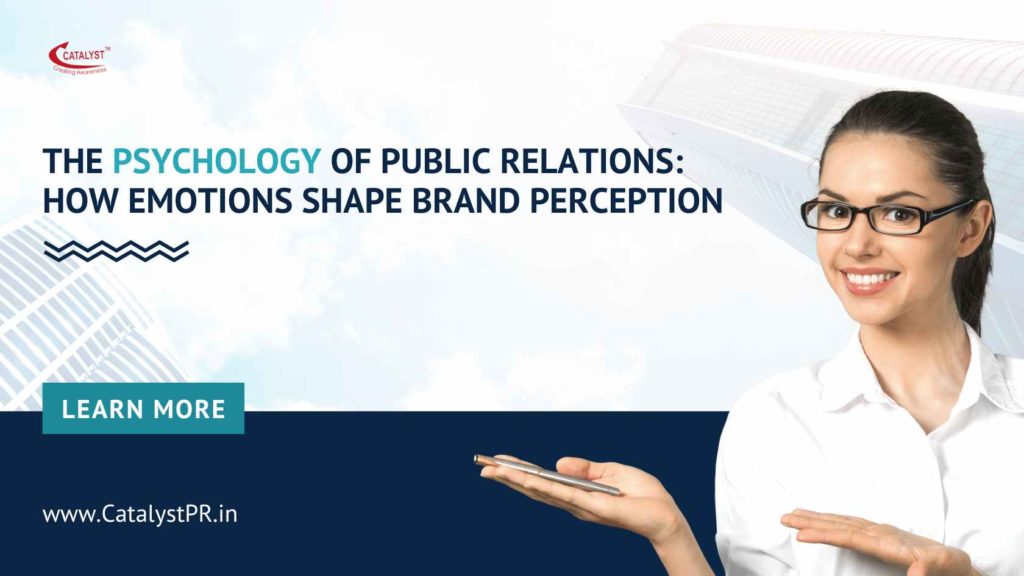Public Relations (PR) is more than just press releases, media outreach, and social media campaigns—it’s about emotions. At its core, PR is the art of shaping public perception, and that perception is built on how people feel about a brand. Consumers don’t just engage with businesses logically; they make decisions based on emotions like trust, excitement, nostalgia, and belonging. Understanding the psychology behind PR can help businesses create stronger connections, enhance brand loyalty, and drive meaningful engagement.
Why Emotion Matters in PR
People don’t just buy products or services—they buy stories, values, and experiences. A great PR campaign doesn’t just communicate facts; it triggers emotions that make the audience remember, relate, and respond.
Think about iconic brands like Apple, Coca-Cola, or Nike. Their PR efforts don’t focus solely on product specifications; they tell emotional stories. Apple makes you feel like an innovator, Coca-Cola sells happiness, and Nike inspires determination. This emotional connection is what keeps people engaged with a brand long-term.
Emotions drive decision-making. Studies show that consumers rely on emotions rather than information when making brand choices. This means that an effective PR strategy must go beyond logic and statistics to create compelling, emotionally resonant narratives.
How PR Uses Emotion to Shape Brand Perception
1. Storytelling That Sparks Connection
The most successful PR campaigns rely on storytelling. A well-crafted brand story doesn’t just inform—it engages. Whether it’s a brand origin story, a behind-the-scenes look at company culture, or a customer success story, storytelling humanizes the brand and makes it more relatable.
For example, when Airbnb launched its “Belong Anywhere” campaign, it wasn’t about booking a place to stay—it was about creating experiences and fostering connections. The campaign evoked emotions of adventure, inclusivity, and belonging, making Airbnb more than just a service—it became a movement.
2. Crisis Management: Turning Negative Emotions into Trust
When a brand faces a PR crisis, public perception can shift rapidly. How a company responds emotionally can determine whether it regains trust or loses credibility. A generic corporate apology rarely works—people expect sincerity, accountability, and a genuine human response.
Take Johnson & Johnson’s handling of the Tylenol poisoning crisis in the 1980s. Instead of downplaying the incident, the company prioritized consumer safety, pulled all products off the shelves, and implemented tamper-proof packaging. Their response wasn’t just about fixing a problem—it was about rebuilding trust, and they succeeded.
3. Creating a Sense of Community
People love feeling like they’re part of something bigger. PR campaigns that foster community and shared experiences create stronger emotional bonds between brands and consumers.
Brands like Harley-Davidson have mastered this by making customers feel like part of an exclusive club. Their PR strategy focuses on events, loyalty programs, and customer engagement that reinforce the idea of belonging.
Even smaller brands can leverage this by creating online communities, hosting events, or engaging in meaningful social causes that resonate with their audience.
The Future of Emotion-Driven PR
With digital media evolving, brands have more ways than ever to connect emotionally with their audiences. Personalized content, AI-driven PR strategies, and interactive storytelling are shaping the future of PR. However, the core principle remains the same—brands that make people feel something are the ones that leave a lasting impact.
By understanding the psychology of PR, businesses can craft campaigns that don’t just attract attention but also build trust, loyalty, and long-term engagement. In the end, people may forget what a brand said, but they’ll never forget how a brand made them feel.


